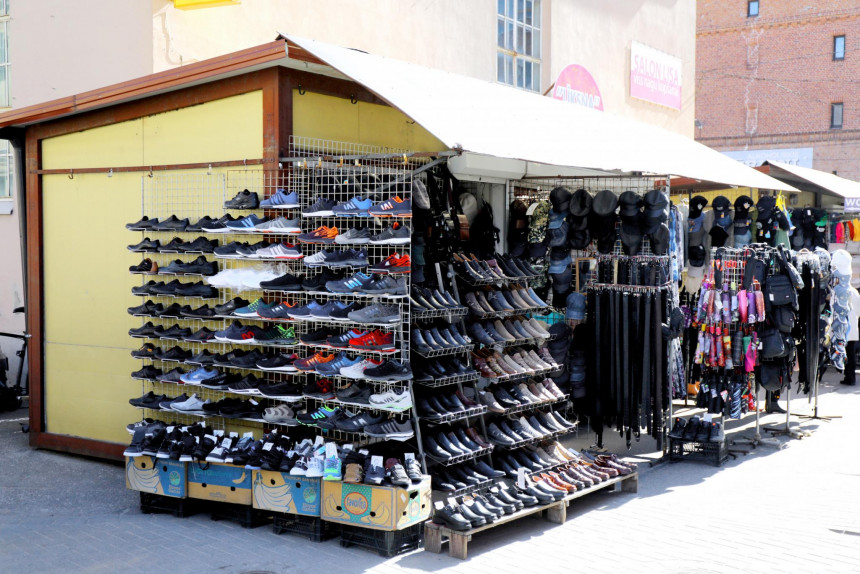In May, people in Latvia actively spent their savings to buy clothes and shoes

According to data compiled by the Central Statistical Bureau (CSB), the total turnover of retail businesses in real prices increased by 23.6% in May compared to May 2021. As the average consumer price level in Latvia increased by 16.9% over the year, the physical volume of purchases in May was 6.7 percentage points higher than last year.
In theory, this result should mean that consumer spending is up by around 7% on the previous year and that people have started to live better. However, according to the financial statistics compiled by the Bank of Latvia, the increase in consumption in May was based on a decrease in people's bank deposits and an increase in credit. In one month - May - compared to April, deposits of Latvian households in banks decreased by a total of €37.7 million (minus 0.38% of the total amount of households' money in banks in April), while the volume of household loans increased by around €34 million during the month (plus 0.63% of the total volume of household loans in April). The increase in household credit volumes is also stimulated by the fact that construction costs rose by a fifth over the year, which means that the increase in construction costs is much higher than the current interest rates on household loans.
According to data compiled by the CSB,
retail sales of clothing, footwear and leather goods were 65%(!) higher in May this year than last year
at constant prices (growth in purchases minus the inflation rate). This was probably partly due to the lockdown last year - with the opportunity to go out in public this year, people felt the need to buy some new outfits. However, there is another important argument: clothing and footwear are durable goods. So at a time when inflationary expectations are starting, buying long-term items can provide more income than saving cash or money in bank accounts. According to the CSB, rising costs have led people to change their shopping habits and to cut back on spending on certain groups of goods. Compared to April, in May much less (in constant prices) culture and leisure goods were bought (minus 16%). Harsh, but if difficult times are ahead, culture is the first to be sacrificed. The next thing that Latvians sacrificed was cosmetics and toiletries. They were bought 6.3% less in May than in April. However, it is unlikely that Latvian people started to use less soap, but rather that they started to consume the soaps and shampoos they had bought large amounts of at the end of February and March, in fear of the nuclear war, so fewer purchases were made in May. Compared to April, purchases of mobile phones and computers were also lower in May (at constant prices) (sales of information and communication technology equipment in specialized retail stores were minus 4.1%). This is probably partly due to the fact that the need for Zoom-supported devices has decreased with the shift from home to non-home work. Compared to April, food purchases in May were also lower (at constant prices) (minus 1%), but here too the savings of the poorest on food consumption add up with the rational use of products purchased in March, while fearing the war, before their use-by date.
The amount of fuel bought in May was roughly the same as in April, but compared to May last year, the actual amount of fuel bought was 2.6% lower. This process can also be seen in city traffic. The flow of private cars when the price of fuel is above two euros per liter is similar to how it was during the time of Covid restrictions.
*****
Be the first to read interesting news from Latvia and the world by joining our Telegram and Signal channels.